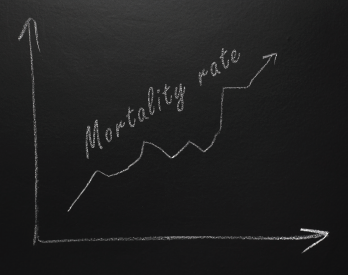
GTbov / shutterstock.com
A study published in Annals of Internal Medicine in December 2017 looked at trends in lupus mortality over a 46-year period. The researchers say they set out to close some knowledge gaps.
“There [was] a knowledge gap relating to the large differences we see in death rates from one study to another, which could have been due to different methodologies used in different studies,” says Ram R. Singh, MD, professor of medicine and pathology at the David Geffen School of Medicine at the University of California, Los Angeles (UCLA) and the study’s senior author. “Most of these studies were done in rheumatology centers and didn’t capture the death rates in the general population. There were no studies covering the entire U.S.”
“To overcome these limitations, we utilized mortality data from the Centers for Disease Control and Prevention’s National Vital Statistics System, encompassing more than 99% of all deaths in the 50 states and District of Columbia from the years 1968 through 2013,” says lead author Eric Y. Yen, MD, a clinical instructor at the UCLA Department of Medicine.
More than 68,000 deaths from systemic lupus erythematosus (SLE) and 100,851,288 non-SLE deaths were reported during that period. The researchers used JointPoint trend analysis of annual age-standardized mortality rates (ASMR) for both disease- and non-disease-related causes by sex, race/ethnicity and geographic region.
“The number of deaths reported in this study is large,” says Dr. Singh. “There were more than 50,000 reports where SLE was the underlying cause of death, according to the death certificate, and another 18,000 where SLE was a contributing or secondary cause of death. Using 46 years of data, this was a large study of long duration.”
Death Rate Comparisons

Dr. Singh (left) and Dr. Yen (right)
During the period of interest, five- and 10-year survival rates for SLE improved from less than 50% during the 1950s to around 90% in the 1980s. But the SLE ASMR decreased less than the non-SLE ASMR, with a 34.6% increase in the ratio of SLE to non-SLE ASMR. The ASMR for the general population went down every year, while SLE ASMR decreased between 1968 and 1975, increased between 1975 and 1999 and then decreased again for the rest of the study period.
Among those dying from other causes, the death rate dropped by 44% from 1968–2013. In contrast, in lupus it dropped only 24% over the same period.

